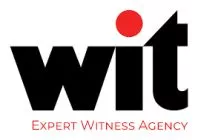- within Corporate/Commercial Law and Antitrust/Competition Law topic(s)
To understand where biologics litigation is headed, WIT examines these types of disputes happening in every forum shaping the market. As we highlighted in our recent analysis of BPCIA litigation, companies are aggressively protecting and challenging biologic patents in federal court, but that's only part of the picture. Increasingly, the Patent Trial and Appeal Board (PTAB) has become a parallel battleground where the most valuable patents are put to the test, often with market-shaping results. WIT analyzed 192 PTAB proceedings involving biologics to uncover which products, technologies, and therapeutic areas are most frequently challenged, and what this activity reveals about where the market is headed. Let's take a look at the data surrounding YoY caseloads, resolutions, active ingredients, and more.
Biologics at the PTAB: Cases Over Time
A closer look at case outcomes underscores just how high the stakes are at the PTAB. Of the 192 biologics-related proceedings analyzed, nearly 93% have already been terminated, with only a handful, approximately 7%, still open.
Among those that reached a final decision, nearly one in five resulted in all challenged claims being found unpatentable, while only about 5% saw all claims upheld. Many others resolved through settlement, procedural dismissals, patent disclaimers, or were joined to other trials. These figures highlight not only the aggressive use of inter partes reviews in the biologics space but also the diverse—and often unpredictable—range of resolutions shaping the competitive landscape, especially before the PTAB.
| Resolution | Total cases | Total cases % |
|---|---|---|
| Institution Decision: Denied Institution | 36 | 18.75% |
| Final Decision: All Claims Unpatentable | 35 | 18.23% |
| Post-Institution: Settled | 28 | 14.58% |
| Post-Institution: Joined To Other Trial | 22 | 11.46% |
| Pre-Institution: Procedurally Dismissed | 21 | 10.94% |
| (blank) | 13 | 6.77% |
| Final Decision: All Claims Upheld | 10 | 5.21% |
| Post-Institution: Patent Owner Disclaimed | 8 | 4.17% |
| Pre-Institution: Settled | 7 | 3.65% |
| Final Decision: Mixed Claim Findings | 6 | 3.13% |
| Pre-Institution: Patent Owner Disclaimed | 5 | 2.60% |
| Pre-Institution: Joined To Other Trial | 1 | 0.52% |
| Grand Total | 192 | 100.00% |
Now that we are familiar with the caseload and resolution activity in this sector, let's break down this data with some common questions from those litigating in the space.
Q: Which active ingredients are driving the most PTAB activity?
A: The PTAB's biologics docket is dominated by a few heavy hitters. Aflibercept (EYLEA) leads with 26 challenges, followed by adalimumab (HUMIRA) at 20, trastuzumab (HERCEPTIN) at 18, insulin glargine (LANTUS) at 18, and rituximab (RITUXAN) at 16. This doesn't come as a surprise, as each is a blockbuster biologic with a global reach, facing intense biosimilar and next-generation competition—but they're not alone. We also see steady challenges around products like tocilizumab (ACTEMRA), eculizumab (SOLIRIS), and pembrolizumab (KEYTRUDA), signaling that even newer entrants are quickly becoming part of the patent dispute landscape.
| Categories | Cases |
|---|---|
| Anti-TNF Therapies | |
| Adalimumab (HUMIRA) | 20 |
| Etanercept (ENBREL) | 2 |
| Rituximab (RITUXAN) | 7 |
| Anti-VEGF Treatments | |
| Aflibercept (EYLEA) | 26 |
| Bevacizumab (AVASTIN) | 2 |
| Drug Delivery Devices | |
| Insulin Glargine (LANTUS) | 18 |
| Methods of Administration | |
| General Antibody Patents | 16 |
| Natalizumab (TYSABRI) | 1 |
| Tocilizumab (ACTEMRA) | 1 |
| ErbB2 Therapies | |
| Trastuzumab (HERCEPTIN) | 18 |
| Lymphoma Treatments | |
| Rituximab (RITUXAN) | 16 |
| General Treatments | |
| Eculizumab (SOLIRIS) | 8 |
| Rituximab (RITUXAN) | 4 |
| Checkpoint Inhibition | |
| Pembrolizumab (KEYTRUDA) | 9 |
| Protein Purification | |
| General Antibody Patents | 5 |
| Trastuzumab (HERCEPTIN) | 4 |
| Interleukin Therapies | |
| Risankizumab (SKYRIZI) | 1 |
| Tocilizumab (ACTEMRA) | 8 |
| Uncategorized | |
| Adalimumab (HUMIRA) | 1 |
| Dupilumab (DUPIXENT) | 3 |
| Etanercept (ENBREL) | 1 |
| Insulin Glargine (LANTUS) | 2 |
| Protein Work | |
| General Antibody Patents | 3 |
| Pegfilgrastim (NEULASTA) | 4 |
| Antibody-based Therapies | |
| General Antibody Patents | 3 |
| Ustekinumab (STELARA) | 2 |
| Formulations | |
| Abatacept (ORENCIA) | 1 |
| Adalimumab (HUMIRA) | 2 |
| Aflibercept (EYLEA) | 1 |
| Natalizumab (TYSABRI) | 1 |
Q: What types of therapies and technologies are most often challenged?
A: When we break the cases down by category, a few clear themes emerge. Anti-TNF therapies—core treatments for autoimmune diseases—account for 29 cases, underscoring their central role in BPCIA litigation. Close behind are anti-VEGF treatments (28 cases), critical in ophthalmic and oncology care. However, it's not just about therapeutic categories: technologies such as drug delivery devices (18 cases), methods of administration (18 cases), and ErbB2-targeting therapies (18 cases) are also frequently challenged. This reflects the broad reach of PTAB battles, which increasingly target not only active ingredients but the surrounding innovations that shape how biologics are formulated, delivered, and used.
| Categories | Cases |
|---|---|
| Anti-TNF Therapies | 29 |
| Anti-VEGF Treatments | 28 |
| Drug Delivery Devices | 18 |
| Methods of Administration | 18 |
| ErbB2 Therapies | 18 |
| Lymphoma Treatments | 16 |
| General Treatments | 12 |
| Checkpoint Inhibition | 9 |
| Protein Purification | 9 |
| Interleukin Therapies | 9 |
| Protein Work | 7 |
| Uncategorized | 7 |
| Antibody-based Therapies | 5 |
| Formulations | 5 |
| 0 | 2 |
| Grand Total | 192 |
Q: How has PTAB attention shifted over time?
A: Looking year by year, we see waves of focus that mirror product life cycles and competitive pressures. Early challenges centered on anti-CD20 antibodies, such as RITUXAN, and TNF inhibitors, like HUMIRA. By 2017, HERCEPTIN dominated filings, alongside growing interest in LANTUS and DUPIXENT. More recently, aflibercept and checkpoint inhibitors, such as KEYTRUDA, have taken center stage, with the past two years bringing notable activity around IL-6 inhibitors, including ACTEMRA, and newer agents like risankizumab (SKYRIZI) and ustekinumab (STELARA). This timeline suggests that no product is too early—or too late—to become part of the IPR playbook.
| Year | Active ingredient | Total |
|---|---|---|
| 2014 | Rituximab (RITUXAN) | 3 |
| 2015 | Adalimumab (HUMIRA) | 7 |
| General Antibody Patents | 3 | |
| Rituximab (RITUXAN) | 2 | |
| Abatacept (ORENCIA) | 1 | |
| Etanercept (ENBREL) | 1 | |
| 2016 | General Antibody Patents | 8 |
| Rituximab (RITUXAN) | 2 | |
| (blank) | 2 | |
| Bevacizumab (AVASTIN) | 1 | |
| Pegfilgrastim (NEULASTA) | 1 | |
| Adalimumab (HUMIRA) | 1 | |
| Natalizumab (TYSABRI) | 1 | |
| 2017 | Trastuzumab (HERCEPTIN) | 22 |
| Rituximab (RITUXAN) | 19 | |
| Adalimumab (HUMIRA) | 14 | |
| General Antibody Patents | 14 | |
| Dupilumab (DUPIXENT) | 3 | |
| Insulin Glargine (LANTUS) | 2 | |
| Etanercept (ENBREL) | 2 | |
| 2018 | Insulin Glargine (LANTUS) | 11 |
| Bevacizumab (AVASTIN) | 1 | |
| Rituximab (RITUXAN) | 1 | |
| Pegfilgrastim (NEULASTA) | 1 | |
| 2019 | Insulin Glargine (LANTUS) | 7 |
| Eculizumab (SOLIRIS) | 3 | |
| Pegfilgrastim (NEULASTA) | 2 | |
| General Antibody Patents | 2 | |
| Adalimumab (HUMIRA) | 1 | |
| 2020 | Aflibercept (EYLEA) | 1 |
| 2021 | Tocilizumab (ACTEMRA) | 7 |
| Aflibercept (EYLEA) | 7 | |
| 2022 | Aflibercept (EYLEA) | 4 |
| Tocilizumab (ACTEMRA) | 2 | |
| Risankizumab (SKYRIZI) | 1 | |
| Natalizumab (TYSABRI) | 1 | |
| 2023 | Aflibercept (EYLEA) | 12 |
| Eculizumab (SOLIRIS) | 5 | |
| Ustekinumab (STELARA) | 2 | |
| Pembrolizumab (KEYTRUDA) | 1 | |
| 2024 | Pembrolizumab (KEYTRUDA) | 8 |
| Aflibercept (EYLEA) | 2 | |
| 2025 | Aflibercept (EYLEA) | 1 |
| Grand Total | 192 |
Q: What kinds of patents are most often challenged?
A: The PTAB fights are not just about active ingredients; they cut across the entire lifecycle of a biologic. Many disputes focus on methods of administration, drug delivery devices, and manufacturing processes—issues central to how biologics are made and used, not just what they are. For example, challenges to protein purification methods and antibody engineering techniques are common, as are cases addressing checkpoint inhibitors and interleukin therapies. The broad range of technologies under review highlights the PTAB's critical role in shaping both innovation strategies and biosimilar pathways.
The Future of Biosimilar Competition and PTAB Litigation
The stakes at the PTAB are high: a successful inter partes review can invalidate key patents, accelerate the entry of biosimilars, and reshape settlement negotiations. For companies developing biosimilars, the PTAB has become a central tool for clearing a path to market. For innovators, it's a critical front in protecting product lifecycles. The data make it clear that companies on both sides are investing heavily in this forum—and that future biologic launches will almost certainly face PTAB scrutiny alongside traditional litigation.
The content of this article is intended to provide a general guide to the subject matter. Specialist advice should be sought about your specific circumstances.


